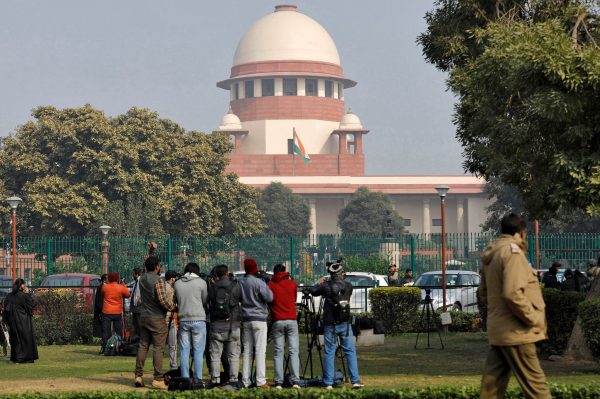The dysfunctional Monopolies and Restrictive Trade Practices Act was replaced by the Competition Act in 2002. As part of the Act, the Competition Commission of India (CCI) was formed in 2003. The Act had to be amended twice over the next decade before the CCI became operational. But this extended genesis has not provided clarity around the scope and jurisdiction of the CCI with respect to sectoral regulators — and regulatory shopping has emerged as a major source of conflict.
In a 2011 case, three power distributors found guilty of abusing their dominant positions by the CCI questioned the CCI’s jurisdiction. The distributors argued they were regulated by the Delhi Electricity Regulatory Commission (DERC). The DERC responded that, while matters linked to tariffs must be decided in part by their regulations, allegations of anti-competitive behaviour fell within the jurisdiction of the CCI.
Conversely, there have also been several cases in which sectoral regulators have defended what they considered to be their turf. A recent instance of jurisdictional conflict involved the CCI and the Securities and Exchange Board of India (SEBI). Credit rating agency Brickwork Ratings appealed to the CCI for remedies against price collusion and predatory pricing by larger incumbents. The larger firms argued that they were governed by the SEBI, their sectoral regulator, which also defended this position. Indeed, in an earlier case in 2019, the CCI did not examine alleged abuse of market dominance by the National Stock Exchange of India due to an ongoing SEBI investigation.
In a similar case of regulatory shopping in 2020, Mahyco Monsanto Biotech opposed the CCI’s authority to investigate abuse of market dominance, stating that the Controller General of Patents, Designs and Trade Marks was the appropriate regulator. But the Delhi High Court ruled that the abuse of market dominance by patent holders fell under the CCI’s purview.
These conflicts highlight the legislative ambiguity around the jurisdiction of various regulators. To resolve such ambiguity, the Competition Act should be prioritised over all other laws relating to competition. If each sectoral regulator decided on competition cases involving industries under its jurisdiction, then the CCI would be superfluous.
In a 2018 case, where the CCI faced telecommunications services provider Bharti Airtel and others, the Supreme Court upheld the primacy of the national regulator over the sectoral regulator, the Telecom Regulatory Authority of India. The court noted that the CCI ‘is not [a] sector-based body but has the jurisdiction across which transcends sectoral boundaries, thereby covering all the industries’.
The court approved of the 2011 National Competition Policy’s position that ‘a sectoral regulator may not have an overall view of the economy as a whole and may tend to apply yardsticks which are different from the ones used by the other sectoral regulators’. It also emphasised that the CCI ‘is expected to have developed’ the expertise and capacity ‘to apply uniform competition principles across all sectors of economy’ and is the authority exclusively entrusted to enforce and penalise violations of the Competition Act.
In addition, the court overruled the contention that ‘[the] CCI can ensure competition only in an unregulated sector’, and remarked that only the CCI can deal with ‘anti-competitive act[s] from the lens of the Competition Act’ after the ‘jurisdictional facts’ have been decided by the appropriate sectoral regulator.
It is time the Indian government systematically addressed ambiguities around the jurisdiction and hierarchy of various regulators. This is important for three reasons. First, there is a need to curb regulatory shopping. Second, conflicts between regulators increase the policy uncertainty faced by the market. Third, clarity around the jurisdiction of various regulators will reduce administrative delays.
Faced with similar jurisdictional conflicts, countries with advanced regulatory capacity like the United States have adopted a multi-layered approach. While some sectors are kept outside the jurisdiction of the competition regulator, in others the jurisdiction is contingent on the nature of the remedy sought. In some cases, the sectoral regulator is statutorily expected to consult the competition regulator, or they may enjoy concurrent jurisdiction. But given the weak judicial and regulatory capacity of many developing countries like India, there is a need for more clearly defined regulatory jurisdictions.
There is a case for the government to step in and amend the Competition Act to clearly establish the jurisdiction of the CCI, while also respecting past court rulings and consulting the consumers, industries and sectoral regulators that would be affected by such changes. This should be coupled with a jurisdictional cooperation framework where the CCI would have to consult with sectoral regulators when examining departures from competition in regulated sectors. On the other hand, sectoral regulators should be mandated to redirect cases related to competition to the CCI. This would reduce jurisdictional conflicts and curb regulatory shopping while promoting jurisdictional cooperation.
Poonam Singh is Assistant Professor of Economics at the National Institute of Industrial Engineering, Mumbai.
Vikas Kumar is Associate Professor of Economics at Azim Premji University, Bengaluru. He is co-author of Numbers in India’s Periphery: The Political Economy of Government Statistics (Cambridge University Press, 2020).

